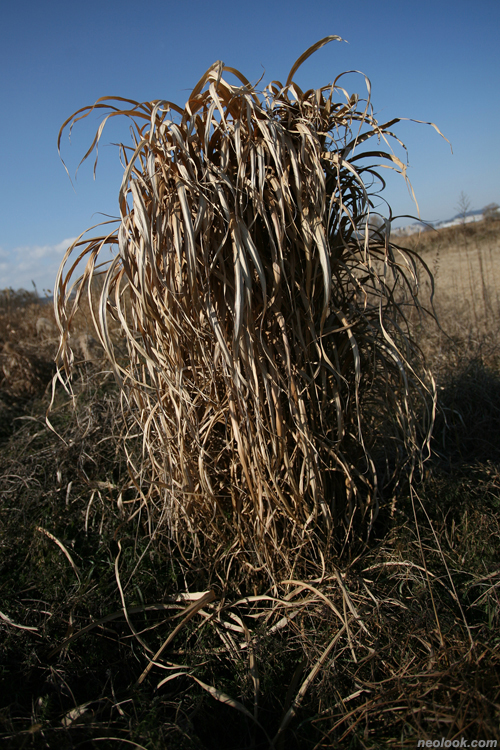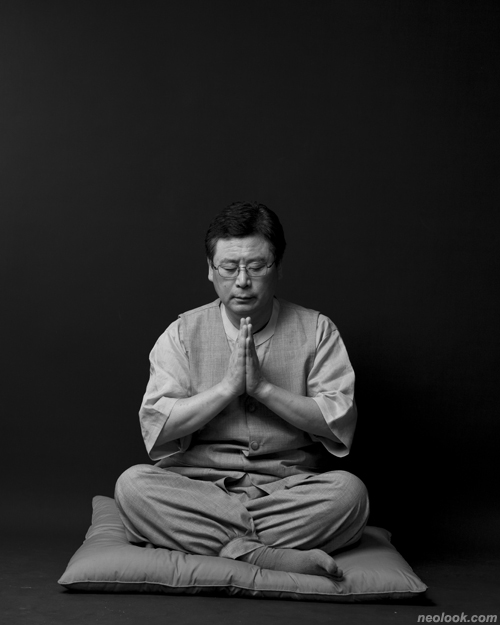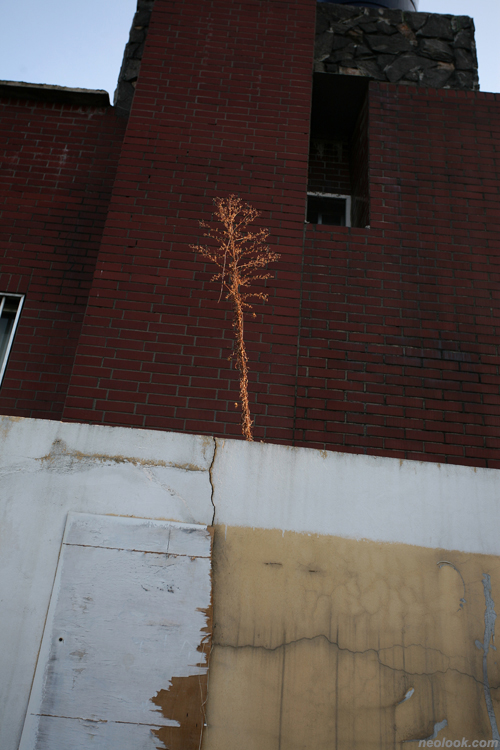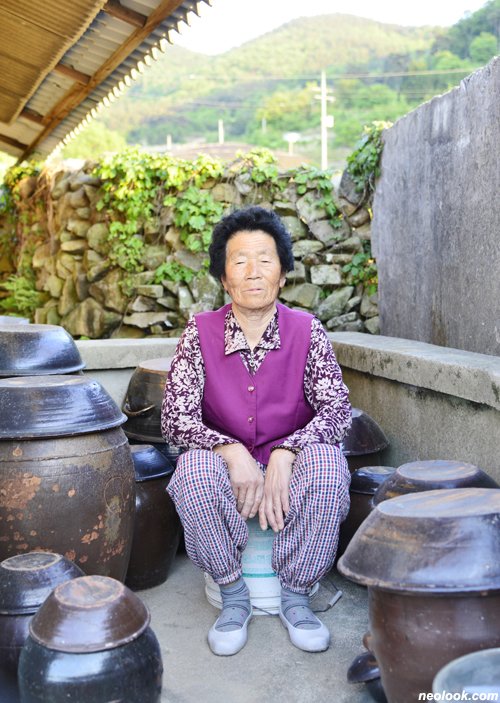- ● homepage
- ● archives
- ● restoration
- ● books
- ● big banners
- ● post board
- ■ neo's search
- ■ about us
- ■ 게재방법 안내
- 개인정보처리방침

- [email protected]
- Tel. 02_335_7922
- Fax. 02_335_7929
- 10:00am~04:30pm
- 월요일~금요일
- 3/3(월) 대체공휴일

풍경을 읽다 Reading the landscape
김대곤_이순희_이호섭_정성태_주적展 2014_1125 ▶ 2014_1130 / 월요일 휴관

- 정성태_shadowscape_03_아카이벌 피그먼트 프린트_140×100cm_2014
초대일시 / 2014_1125_화요일_06:00pm
관람시간 / 10:00am~07:00pm / 월요일 휴관
봉산문화회관 BONGSAN CULTURAL CENTER 대구시 중구 봉산문화길77 Tel +82.53.661.3521 www.bongsanart.org
풍경을 바라보는 시선은 개인적인 경험과 삶에 따라서 다르다. 앙리 카르티에 브레송(Henri Cartier Bresson:1908-2004)은 '사진을 찍을 때 한쪽 눈을 감는 것은 마음의 눈을 위해서이다'라고 말했다. 감긴 한쪽 눈이 마음의 눈을 열고 그 눈을 통해 삶을 발견하고 변화시키는 창조의 결정적 순간을 포착한다는 말이다. 이 전시는 지금까지 작품 크리틱과 워크샵을 통해 개척한 자기 나름의 사진세계를 보여준다. 사실의 재현에만 국한되지 않고 평범한 소재로부터 내재된 의미를 환기시켜 새로운 의미를 찾아낸다. 김대곤은 기도하는 사람들의 표정을 통해 십육나한의 의미를 되짚어 본다. 이순희는 경주 계림의 나무에서 신라의 정령을 만난다. 이호섭은 안개 속에 감추어진 산수의 동양미학을 담백하게 담았다. 정성태는 도시의 보잘것없는 흔적읽기를 통해 자기의 현 위치를 되묻는다. 중국에서 유학온 주적은 한국인에게 장독대가 가지는 의미와 가치가 무엇인지 외국인의 시선으로 우리에게 반문한다. 이들의 사진작업이 비록, 동시대 사진예술을 관통한다고 단정할 수는 없지만 각자의 부족한 부분을 채워 나가는 진행형의 전시이다. ■ 봉산문화회관 破釜沈船 ● 화려한 것은 우리를 쉽게 유혹한다. 눈에 보이는 화려함의 유혹을 벗어나 대상의 본질을 이해하고 카메라에 담으려는 태도를 얻는 것은 진정한 사진가가 되기 위한 첫 번째 조건이다. 끊임없는 노력을 통해서 사진가의 눈도 마치 허물을 벗듯이 새로운 지평에 도달하게 된다. 한번 얻은 새로운 지평을 유지하려는 노력이 절실히 필요하다. 파부침선(破釜沈船)이라는 중국 고어가 있다. 솥을 깨뜨려 다시 밥을 짓지 아니하며 배를 가라앉혀 강을 건너 돌아가지 않는다는 뜻으로, 죽을 각오로 싸움에 임하는 것을 비유적으로 이르는 말이다. 지난 몇 학기 동안 함께 작업 하였던 제자들의 전시를 축하하며 뒤로 돌아갈 다리를 태워 버리는 오기로 끊임없이 전진하기를 기대한다. ■ 구본창

- 김대곤_arhan_001_아카이벌 피그먼트 프린트_50×40cm_2014

- 김대곤_arhan_002_아카이벌 피그먼트 프린트_50×40cm_2014
부처와 중생을 이어주는 것이 나한 신앙이다. 나한이란 아라한(阿羅漢)의 약칭이며 아라한은 범어 아르한(arhan)의 음역으로 오백비구(五百比丘). 오백상수(五百上首)라고도 합니다. 아라한은 불제자들이 도달하는 최고의 계위로, 이들은 생사윤회를 초월하여 최고의 깨달음을 이루었다고 하며 매우 덕이 높은 성자로 추앙받았습니다. 십육나한 불사는 하나의 부처님에 대한 공양인 동시에 간절한 나의 기도이다. 천태만상의 인간적인 모습으로 기도하는 사람들의 표정에서 십육나한을 찾아내는 것이 이 작업에서 내가 던지는 메시지다. ■ 김대곤

- 이순희_정령의 숲Ⅰ_아카이벌 피그먼트 프린트_76×51cm_2013

- 이순희_정령의 숲Ⅱ_아카이벌 피그먼트 프린트_76×51cm_2013
하늘을 향해 곧게 뻗은 줄기와 땅속으로 거대한 뿌리를 내린 나무가 자리를 지키며 서 있다. 찬란한 가을을 지나 겨울이 되면 무성한 잎에 가려 보이지 않던 줄기와 뿌리가 모습을 드러낸다. 사물의 경계가 겨우 보일 듯한 어둠의 시간, 파인더 안에서 나무의 형태를 형상화 시키는 본인에게 나무는 말없이 스스로의 존재를 드러내 보여준다. ■ 이순희

- 이호섭_in the fog_01_아카이벌 피그먼트 프린트_102×76cm_2014

- 이호섭_in the fog_02_아카이벌 피그먼트 프린트_102×76cm_2014
안개가 그려낸 간결한 선, 희미하게 나타나는 나무와 바위, 조금씩 흩어졌다 모이며 만들어 내는 여백.... 나는 이를 동양의 미(美)라 믿는다. 사진은 짙은 안개가 낀 날 가끔씩 드러나는 능선, 바위, 나무 등을 촬영한 것이다. 그래서 형체가 뚜렷하지 않다. 흐릿한 이미지와 텅 빈 공간은 사유의 여지를 남겨 놓는다. 채워져 있지 않고 비어 있는 공간에서 마음대로 느끼고 상상하며 노닌다. 이제 사물의 모습은 중요하지 않다. 안개에 휩싸인 나무와 바위가 하나가 되고 이를 바라보는 나 또한 하나가 되어간다. ■ 이호섭

- 정성태_shadowscape_01_아카이벌 피그먼트 프린트_140×100cm_2014

- 정성태_shadowscape_09_아카이벌 피그먼트 프린트_140×100cm_2014
도시는 인간의 삶과 함께 그 모습을 드러낸다. 오래되고 흔적으로 아로새겨진 도시의 그림자는 인간과 도시가 그곳에 공존했다는 하나의 단초를 제공한다. 도시공간에 남겨진 삶의 흔적들은 도시의 나이테로서의 생명력을 부여 받고 내 삶의 한 부분으로 나를 마주한다. 도시는 태어나고 성장하고 소멸하고 잊혀지는 유기체 같은 삶을 반복하면서 내가 그곳에 살았고 또한 있었다는 무수한 흔적과 단서들을 흩뿌려둔 채 지금도 자기파괴와 자기증식을 되풀이하고 있다. ■ 정성태

- 주적_남해군_C 프린트_75×50cm_2014

- 주적_안동_C 프린트_75×50cm_2014
나는 중국인으로 지난 3년전부터 한국에서 유학생활을 하고 있다. 외국인인 내 눈에 건축과 일상생활등 다양한 한국의 문화가 있다는 것을 알게 되었지만 특히 식(喰)문화에 괸심을 갖게 되었다. 한국인의 식생활에 가장 중요한 간장, 된장, 고추장등을 담는 장독을 테마로 작업하였다. 더 이상 가정에서 직접 간장, 된장 등을 만들지 않는 현대인의 생활 속에서 장독을 지키고 계시는 나이 드신 분들의 인물사진과 장독대를 함께 촬영하면서 사라져 가는 한국의 음식문화를 기록하였다. ■ 주적
Reading the Landscape ● Fluorescence easily catches your eyes and tempting us. To be a genuine photographer needs to strive for essence and that is the attribute or set of attribute make an element what it fundamentally is, to get the implications beyond the temptation of trying to understand the surface of subjects. Through endless training a photographer's eyes reach a new prospect as the butterfly slips out of pupa to see more and better. And not to forget the enormous effort will be needed sincerely to maintain once the new prospect is taken. There is an old Chinese saying; it figuratively speaks undertaking a battle at the risk of one's life. My congratulations to graduate students, class of 2014! We have worked hard past semesters to be here and your exhibition. This is designed to mark the end of one phase of your lives and the beginning of the next. I wish you consistent, tremendous energy and commitment to photography. ■ Koo, Bohnchang
16 Arhan ● Arhan is liaising between Buhhda and mankind. Arhan is the highest hierarchy which believers in Buddhism can reach. They are held in high esteem because they found the utmost enlightenment which is free from samsara, the eternal cycle of birth, death, and rebirth. There were Buddha and 16Arhan inside of myself. Today for the first time I enshrine sixteen Arhans. Five hundred Arhans eternal lives are an offering to Buddha and my earnest praying at the same time. My message for the work is that finding 16Arhan in prayers' faces of great humane diversity in form and figure. I would continue my 500Ahran work with a thought that praying is being a bridge connecting the world and the nature of Buddha. ■ Kim, Dae-Gon
Strolling with mist ● Simple lines drawn by mist, faintly visible trees and rocks, blanks created by slightly scattering and gathering... … The piece is photographed in a heavy mist day of lightly visible trees, rocks, and ridge line. Therefore, shapes are not clear. Blurred images and empty spaces leave room for private property. In a privately owned place one strolls by freely experiencing and imagining. Now the form of an object is not important. Trees and rocks shrouded by mist form a whole and I, who stares at them, unite as well. Background of the piece is Yellow Mountain. Even though the mountain's marvelous sight is invisible because of the mist, clean oriental esthetics can be experienced from blank spaces and objects' appearance created by as the mist. ■ Lee, Sun-Hee
Forest of spirit ● There is a tree holding ground and standing. It is enrooted in the ground and straightly sends up branches towards the sky. When it comes to winter time after the radiant autumn, branches and roots reveal themselves which have been covered up by overgrown leaves and invisible. At early dawn, I go to Gyerim, a forest in Kyungju holding the wind and carrying my camera. Where no one comes in and out of, I click the shutter of my camera with an artificial lighting. When it is time to somewhat be able to recognize the edge of objects, trees slightly expose the existence of themselves to mewhoshapestheformofthetreeintheviewfinder. ■ Lee, Ho-Seop
shadowscape_opening mind's eye ● From the relationship between human being and nature, A city reveals its image as an organism which shares lives with human. Old and derisory traces of city are marked as shadows and provide clues that human beings and city had shared the area. Traces of life discovered from City space are given life for city's annual ring and they encounter me in an object-object. A city repeats a life like a dying out and being forgotten organism as it is born, grows and disappears. The city is still breaking up in a situation of scattering numerous traces and clues saying I lived and was there. ■ Jung, Sung-Tae
Korean food culture ● I am Chinese and have been studying abroad in Korea since 2011. There are various Korean cultures such as architecture, daily life and so on. Most of all I have been interested in food culture. I worked Jangdokdae as a theme. Jangdokdae is a Korean traditional pottery to store the most important sauce in Koreans' food culture e.g. soy sauce, soybean paste, red pepper paste etc. I documented obsolescent Korean food culture by taking pictures of old people and Jangdokdae together. They look after Jangdokdae in life of the modern man who does not make traditional sauces from scratch at home. ■ Zhou, Di
Vol.20141125j | 풍경을 읽다 Reading the landscape展
